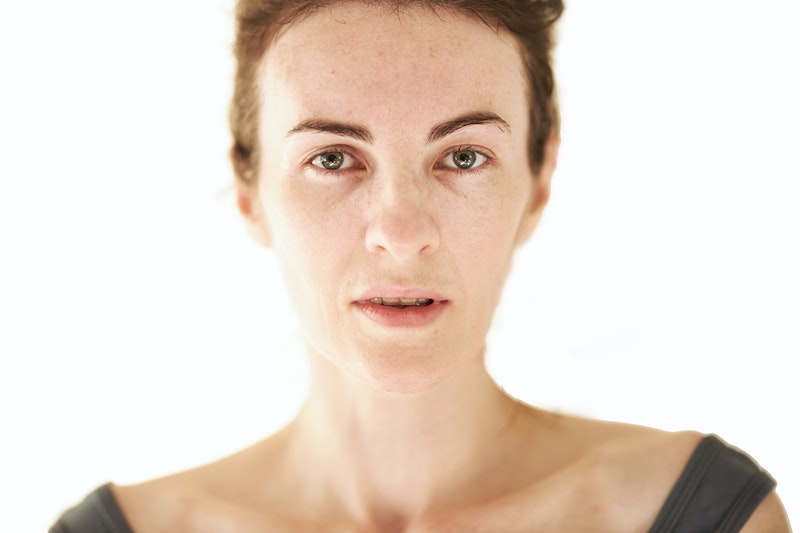PCOD vs PCOS and how to manage both

Women of reproductive age from the adolescent stage onwards start with hormonal fluctuations. These fluctuations might lead to various endocrine and metabolic disorders. PCOD or PCOS commonly known are metabolic disorders concerned with the ovaries.
The ovary is a reproductive organ that changes its form, appearance, and shape according to its hormonal environment. But are PCOD and PCOS both the same? Let’s learn the differences between these two endocrine disorders.

What is PCOD?
PCOD called Polycystic Ovarian Disease is a condition where the ovaries contain multiple immature eggs which later get converted into fluid-filled spaces called cysts. This condition is mainly hereditary and is passed from mothers through generations. The main underlying cause for this condition is a hormonal imbalance, especially an increase in the androgens (male hormones). It is a highly common condition and more prevalent in women of the age group 12-45 years.
The clinical features of PCOD are:
- Irregular ovulation.
- Obesity.
- Alopecia or Male pattern baldness.
- Irregular periods.
- Difficulty in conception.
PCOS called Polycystic Ovarian Syndrome is a condition more severe than PCOD. The polycystic ovary syndrome is one of the most common cause of infertility due to anovulation which affects 4-7% of women following criteria are sufficient for the diagnosis.oligo and/0r anovulation,clinical and/or biochemical signs of hyperandrogenism and polycystic ovaries at ultrasound. In this, the ovaries produce more male hormones, which leads to a higher number of non-functional follicles/cysts in the ovaries per cycle. The higher number of these cysts leads to anovulatory cycles, where a mature egg is not available for fertilization. This leads to infertility.

The clinical features of PCOS are:
- Enlarged and bulky ovaries with more than 10ml volume, leading to overproduction of androgens.
- More than 12 follicles, each measuring 2 to 9 millimeters in diameter, organized around the lining of the ovary like a necklace.
- Irregular or missing periods.
- Heavy periods.
- Acne.
- Hair loss (male pattern baldness).
- Android (Apple-shaped) type of obesity.
- Infertility.
- Insulin resistance.
- Gestational diabetes.
- Excess body-weight.
- Hirsutism (excess hair growth on various parts of the body).
PCOS, if left untreated, leads to other lifestyle disorders like obesity, type 2 diabetes and increase in blood cholesterol levels.
The physical changes seen in PCOS can severely affect the confidence or self-esteem of women and their body image that contributes to psychological disturbances like anxiety and depression. Another factor that also affects their mental health is the societal pressure to have children as they struggle hard to conceive.
PCOS has no cure.
However, it is proven to be manageable by doing lifestyle changes such as weight loss, following a low carb diet and exercise.

Understanding the difference between PCOD and PCOS
The exact reasons for these disorders are not known, but a few theories suggest a myriad of abnormalities. The abnormalities could be, low levels of hormones like progesterone due to infrequent ovulation, overproduction of androgens which could trigger insulin resistance and abnormal androgen levels that signals the over-production of follicles.
PCOS is a metabolic syndrome, whereas PCOD is a milder condition that can improve with the right nutrition & exercise.
Women with PCOS are at a higher risk for other comorbidities like insulin resistance, diabetes, cardiovascular disorders & endometrial cancers.
Symptoms of PCOS like excess facial hair, acne, weight gain are visible at an early age.
Women with PCOD do not have many issues getting pregnant as seeking medical advice can help drastically, but those with PCOS have a higher risk of infertility & also risk of miscarriage.
Women with PCOD may ovulate despite having symptoms similar to that of PCOS. But in the latter condition, ovulation is hampered due to the severe hormonal imbalance.
Ovaries in PCOS are very bulky with high volume & contain approximately 12-15 cysts. Ovaries with PCOD in contrast may not be very bulky and may contain around 5-8 cysts.
Lastly, PCOS is not as common as PCOD.

How to manage PCOS / PCOD Condition
- Weight loss with an increase in fat-free mass is the mainstay for improvement of both PCOD & PCOS according to the International Evidence-based Guideline for the Assessment and Management of PCOS.
- As insulin resistance is mostly associated with PCOS, women should cut down on simple sugars & rather include more whole foods rich in complex carbohydrates in their diet.
- Weight loss will not just increase the chances of ovulation & subsequent pregnancy, but also minimize the risk of miscarriage.
- Regular physical activity & a balanced diet can help in long-term weight management.
- An appropriate and effective dietary recommendation is still a debate for PCOS. According to a few studies, dietary intake was assessed in women with PCOS, and it was found that these women consumed high glycemic index carbohydrates such as white bread and fried potatoes. Of all the popular diets, the Mediterranean diet promotes low GI carbohydrates, high fiber, unsaturated fats, vegetables and fruits (a rich source of vitamins and antioxidants) and is found to be effective in the management of various lifestyle disorders like insulin resistance, diabetes, hypercholesterolemia etc. Hence, it is also suggested for women with PCOS though this requires more supportive evidence. .
- Lean women with PCOS should aim to maintain the bodyweight with consumption of a balanced diet as mentioned in the dietary recommendations. This can help with improving insulin resistance and overproduction of androgens.
- Increasing the level of physical activity (either aerobic or anaerobic) aimed at reducing BMI, helps reduce the ovarian volume & also the number of follicles.
- A recent study has shown that high intensity aerobic activity of at least 3 days per week for 30 min or more per day with greater than or equal to 60% of VO2 max is advised to improve insulin resistance. Also, a combination workout that includes strength or resistance training thrice a week may help with managing the androgen levels.
- Excess hair growth (hirsutism) due to PCOS/PCOD can be managed by various methods like laser hair removal treatment and the use of oral contraceptives to suppress androgen production.
- Acne that is mild to moderate can be treated with topical applications like benzoyl peroxide or clindamycin creams.
- For mental health in women with PCOS, physical exercise, in turn, group exercise has shown a better outcome of quality of life.
